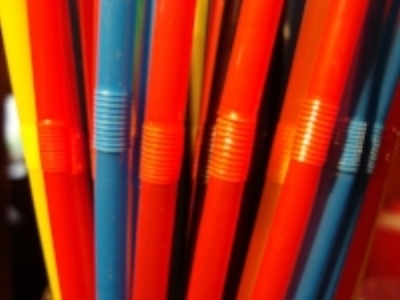The Problem with Polystyrene and Other Non-Recyclable Plastics
Polystyrene and other non-recyclable plastics are a significant and preventable source of marine debris pollution. Many of these products are lightweight and aerodynamic, allowing them to be easily blown into gutters and storm drains, even when disposed of "properly." Additionally, their brittleness causes them to break into smaller pieces when littered, making cleanup virtually impossible.
Once broken down in freshwater and marine environments, many of these plastic products can pose a threat to fish and other wildlife. They can be mistaken for food, leading to choking or starvation if ingested.
Many of these products are not recycled in California, despite attempts by the plastic industry to implement recycling programs. However, these programs are prohibitively expensive and lack meaningful implementation. Furthermore, most curbside recycling programs in California do not accept polystyrene and other non-recyclable plastics used for food containers due to the risk of contamination and accidental littering during transportation.
Polystyrene and other non-recyclable plastic food packaging is extremely costly to local governments, some of whom are required by law to achieve "zero" trash litter in impaired waterways. Litter clean-ups cost billions, and yet are still ineffective. In order to put an end to this type of plastic pollution, polystyrene and other non-recyclable plastic litter must be stopped at its source.
Alternative food packaging materials that are compostable or recyclable are cost-competitive and can be cheaper than polystyrene containers. Studies have shown that in jurisdictions where polystyrene food takeout container bans are implemented, the introduction of these packaging alternatives into the waste stream does not increase. This indicates that as polystyrene is phased out, viable alternatives are readily available without contributing to environmental waste.
If you are interested in leading a polystyrene ban campaign in your area check out the resources below and contact us!
More about Polystyrene and Other Non-recyclable Plastics:
Non-recyclable packaging make up a large portion of marine and community pollution, forcing local governments to pay high clean-up costs such as those featured here in Ballona Creek.
National Geographic: A Whopping 91% of Plastic Isn't Recycled
California Ocean Protection Council Marine Debris Implementation Plan
Alameda Countywide Storm Drain Trash Monitoring and Characterization Project
California Coastal Commission and Algalita Marine Research Foundation Marine Litter Report
Styrene as a Likely Carcinogen (2011 Report on Carcinogens, Dept. of Health and Human Services)
Santa Clara County Storm Drain Trash Monitoring and Characterization Project
Straws, Polystyrene & Other Non-Recyclable Plastic Food Packaging Pollution
Our overly packaged grab-and-go food culture might be convenient for consumers, but is extremely inconvenient for the environment and poses a significant hurdle to local communities' waste diversion goals. Litter characterization studies across the country have recognized fast food restaurants as the primary identifiable source of urban litter, and the most abundant type of non-cigarette litter as fast food packaging, which includes foamed polystyrene. Very little paper or cardboard food packaging, and almost no fast food plastic is currently being diverted from landfills. Frustrated with the increasing amount of this non-recyclable takeout food packaging waste in our landfills, streets, storm drains, and eventually marine environment, local governments across the nation are prohibiting the use non-recyclable disposable food packaging.
Usually unnecessary, used without thought, and thrown away by the million each day, plastic beverage straws are another example of an overused and highly polluting aspect of food packaging. Too small to be captured in recycling processes, straws must be landfilled. Many escape collection and enter our natural environment where they contribute to urban blight, ocean plastic pollution, and cause harm to wildlife (such as this sea turtle who had to have a plastic straw forcibly removed from its nose.)
Like many areas of waste generation, a few simple, economical changes in the way the fast food industry produces and handles its waste could change what currently is a major source of unrecyclable, permanent litter to a model for other businesses. We need to structure our restaurants to offer reusable dishware, reusable or paper straws, and recyclable or compostable take-out food packaging. Better yet, we should all bring our own straws and take-out containers.
Learn more about a 2013 statewide measure to target fast food packaging.
More about the Issue of Takeout Food Waste:


